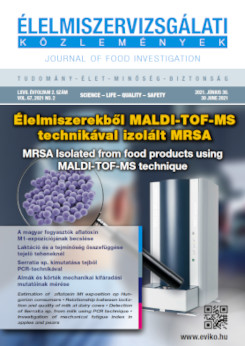Characterization of Serratia species and qualitative detection of Serratia marcescens in raw and pasteurized milk by an analytical method based on polymerase chain reaction
Main Article Content
Absztrakt
Serratia species are opportunistic pathogenic microorganisms primarily known as nosocomial infectious agents, which can also cause food quality problems. The appearance of the extracellular pigment-producing Serratia marcescens in cow’s milk causes its red discoloration, posing a challenge to the dairy industry and food certification laboratories. The detection of the bacterium by conventional procedures based on microbiological methods is time-consuming and labor-intensive, and in many cases does not lead to satisfactory results due to the competitive inhibitory effect of the accompanying microflora. Following the analysis of the relevant literature, the published endpoint PCR methods and the primers used for the detection of S. marcescens were evaluated in in silico and in vitro assays, and then the procedure was tested on farm milk samples. Using the method, a total of 60 raw and pasteurized milk samples were analyzed, more than half of which (i.e., 32) were identified as S. marcescens positive. The significance of our work is mainly represented by the application of the published test methods in food industry practice. Our results highlight to the importance of detecting this bacterial species.

